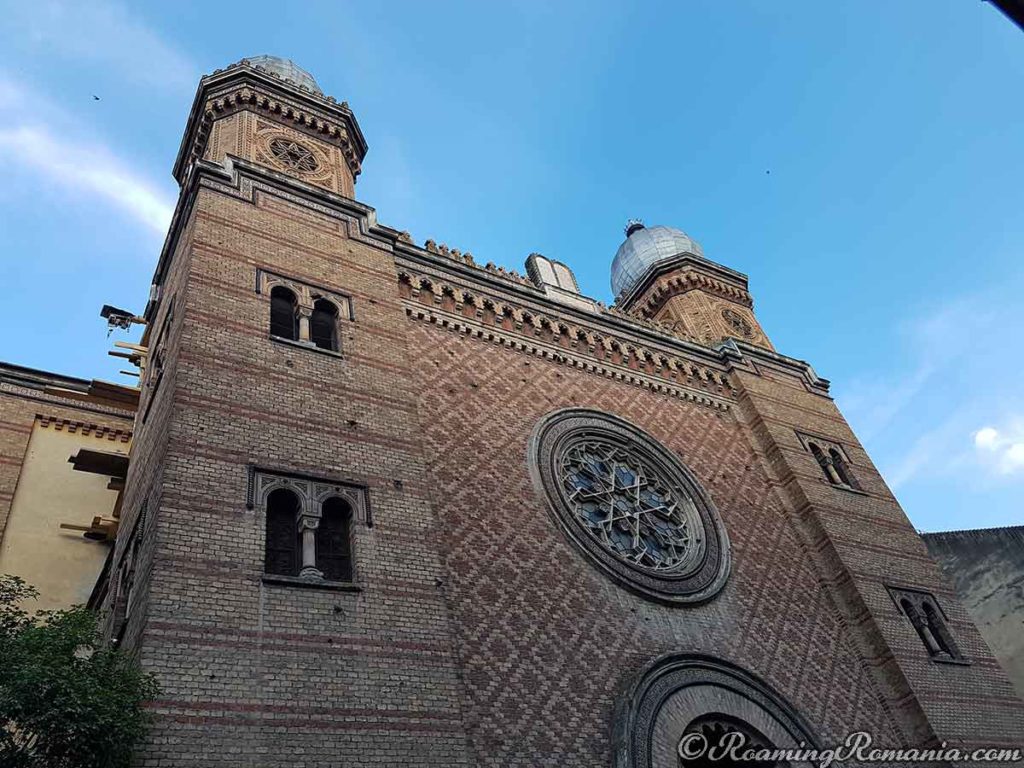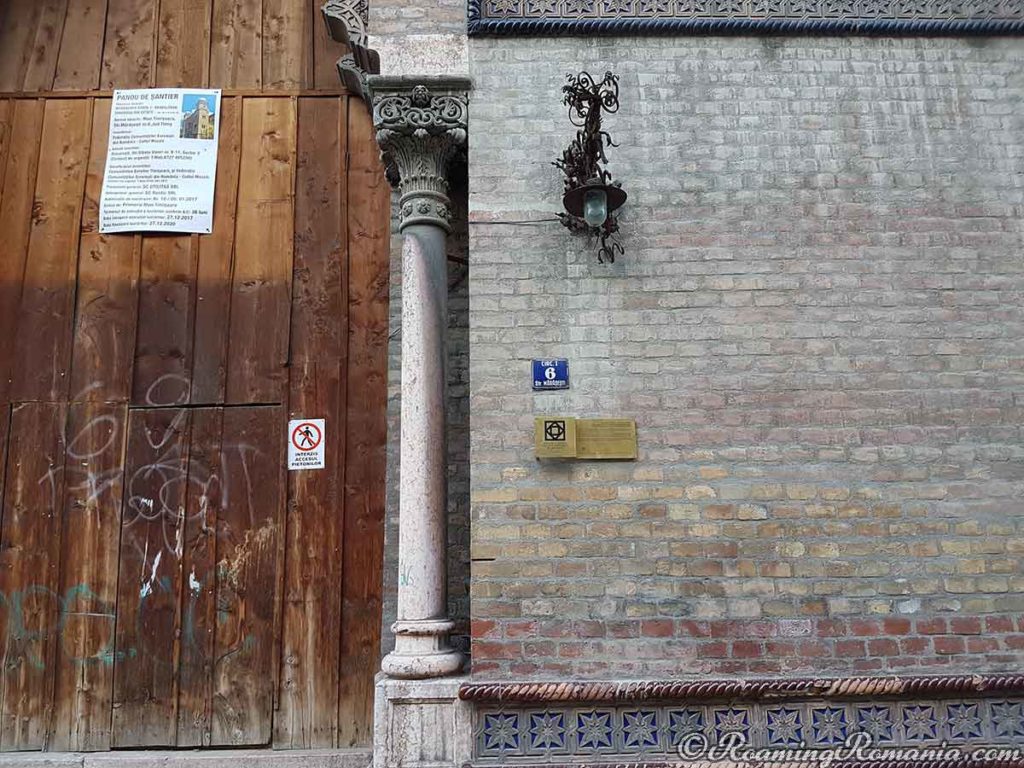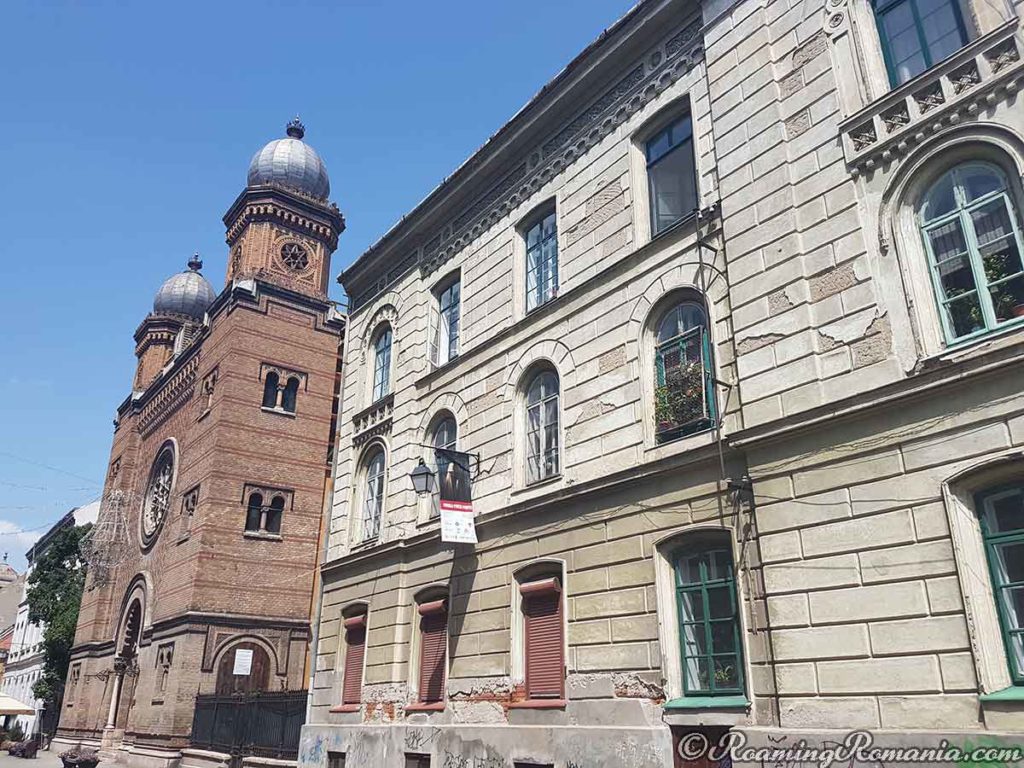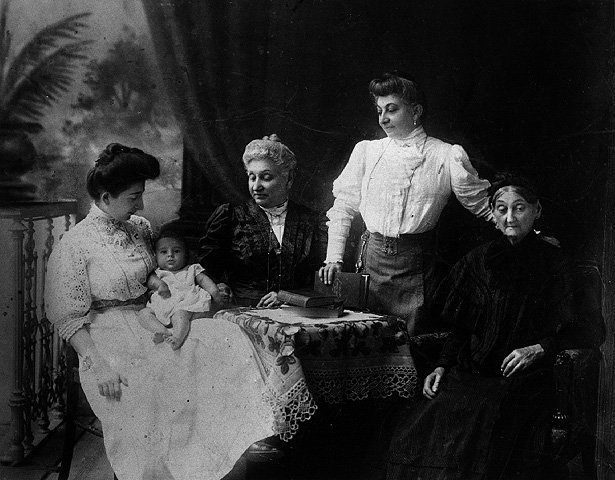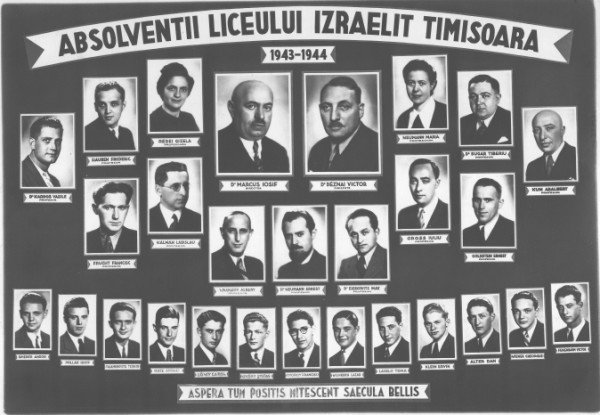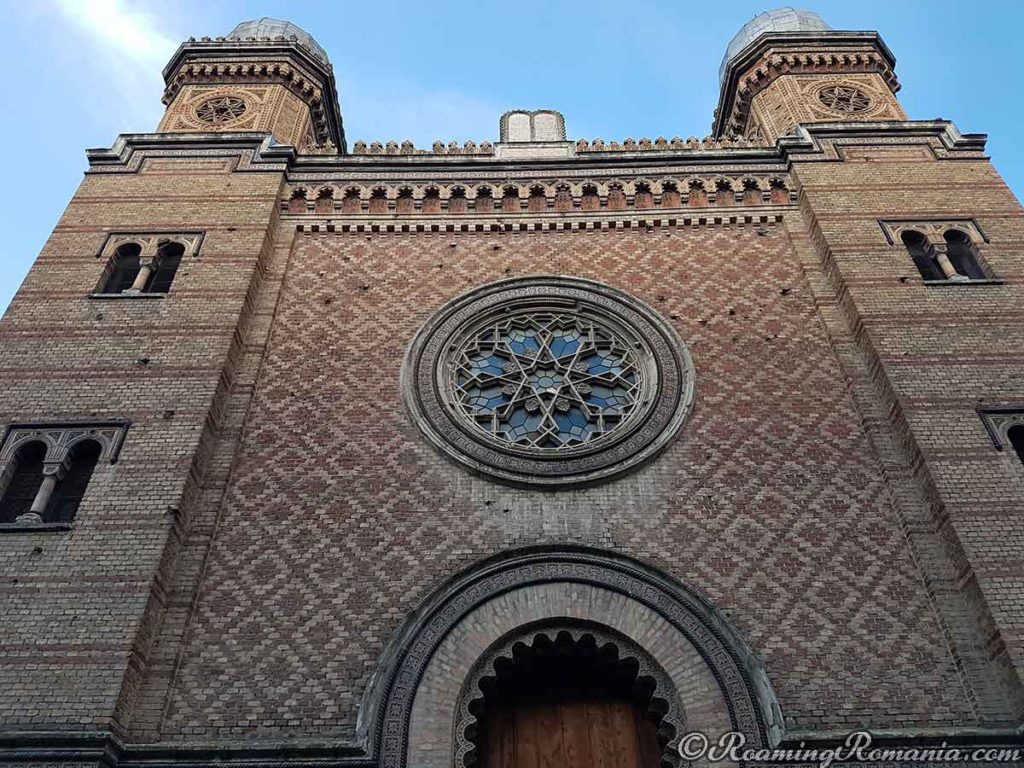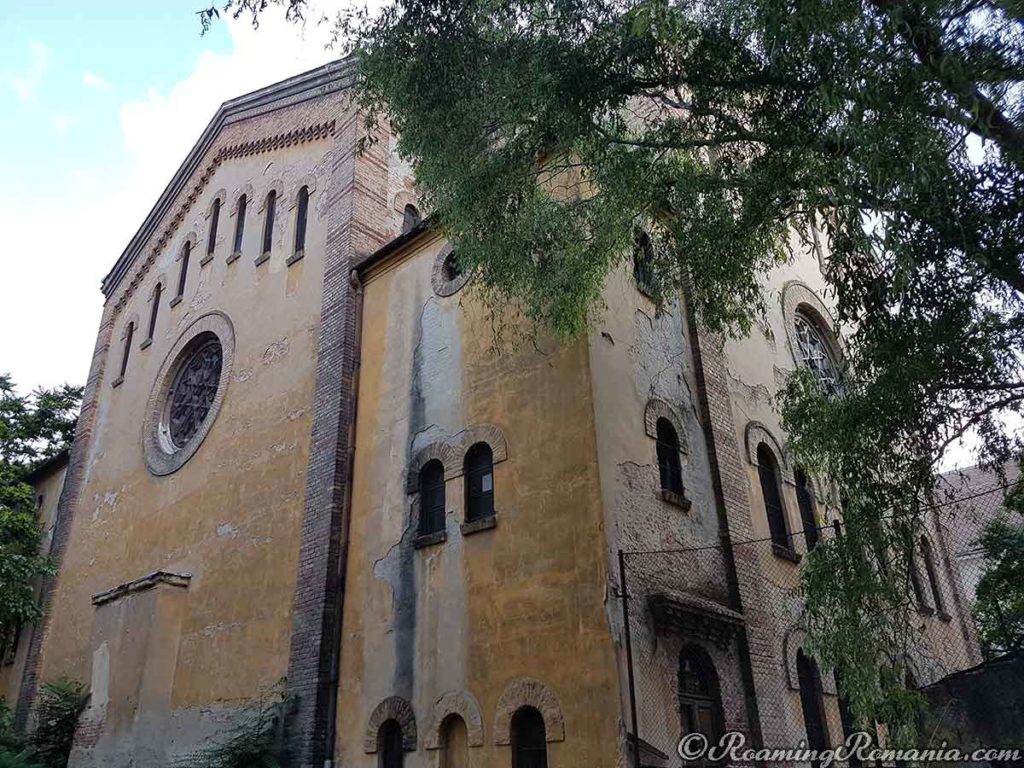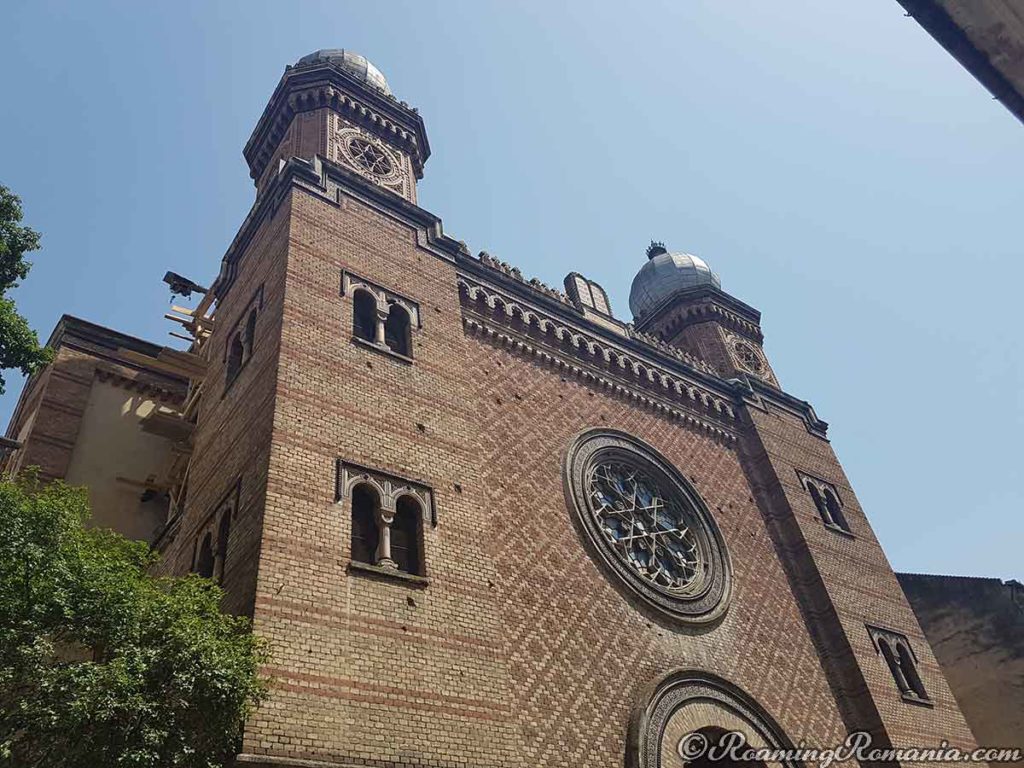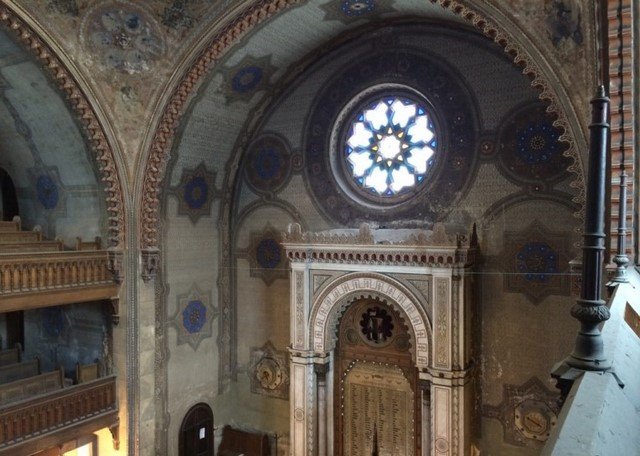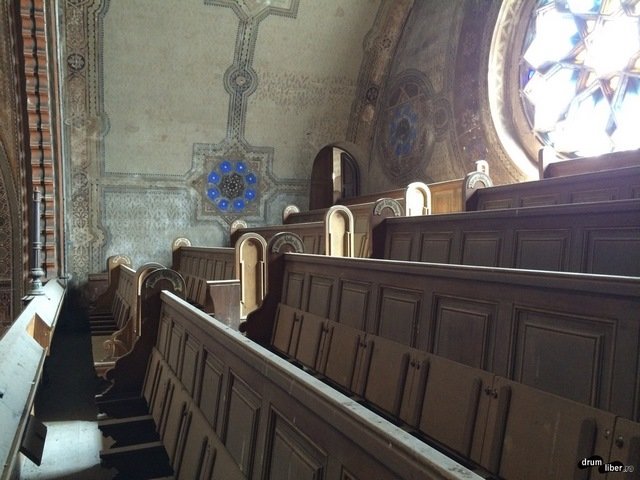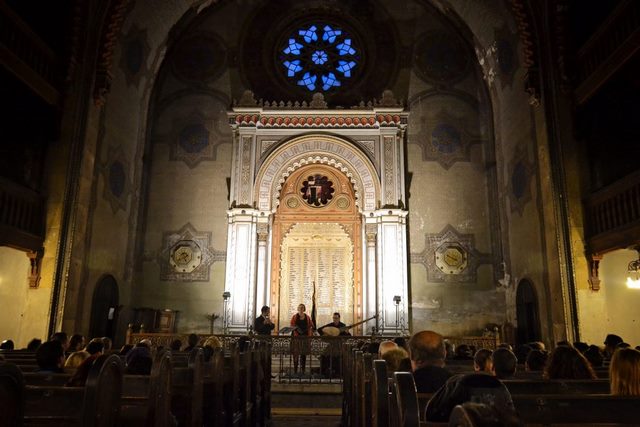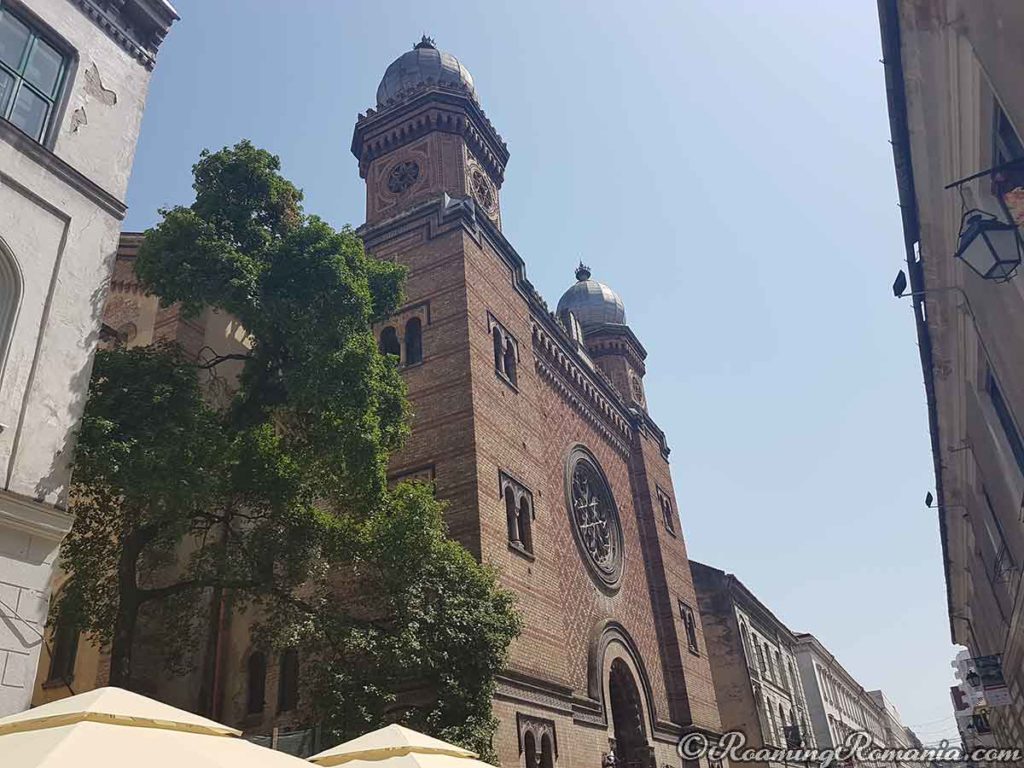Cetate Synagogue Timisoara – Summary
The Cetate Synagogue (Sinagoga din Cetate) is a late 19th-century Eclectic, Moorish, style Neolog Synagogue in Timisoara, Romania. The building, designated a Romanian Historic Monument, is one of the most iconic in the city and resembles the Great Synagogues of Budapest and Berlin. The Cetate Synagogue, built in 1863, is at the center of the Jewish “Golden Age” in Timisoara. It was created during the time period when Emperor Franz Joseph I, through an edict, granted new freedoms and abolished decade-old restrictions imposed on the Jewish populations in the city.
Franz Joseph I himself visited the Cetate Synagogue in 1872 to marvel at its magnificent presence and to show support for Timisoara’s Jewish communities. The synagogue was used by both Ashkenazi and Sephardic Jews for nearly a century before the building closed its doors in 1985. The architect who designed the marvelous edifice was the Vienna educated Carl Schumann, famous for his specialty in Synagogue architecture. The Cetate Synagogue was created as a house of worship and as a symbol of Jewish economic and cultural influence in the city. Today it hosts concerts, events, and a multitude of diverse festivals.
The Cetate Synagogue (1863), along with the Iosefin Synagogue (1895), and the Fabric Synagogue (1899) make up Timisoara’s three synagogues. The Iosefin synagogue being the only one of the three which is still being used as a house of worship today. The Fabric Synagogue and the Cetate Synagogue are currently under plans to undergo renovations and to reintroduce them into the community as a theater, and concert hall, respectively. The restoration projects are expected to be completed by 2021 when Timisoara will be designated the European Capital of Culture.
Cetate Synagogue Timisoara – Table of Contents
- Cetate Synagogue Timisoara – History
- Cetate Synagogue Timisoara – Architecture
- Cetate Synagogue Timisoara – Present Day
- Cetate Synagogue Timisoara – Video
- Cetate Synagogue Timisoara – Visitor Info
Cetate Synagogue Timisoara – History
At the start of the 18th century, Timisoara’s Jewish population consisted primarily of Ashkenazi and Sephardic Jews. Both Jewish factions have their own unique histories in the city, histories which meet and intertwine in the 18th century when the two communities co-shared living districts and eventually the Cetate Synagogue. The Jewish history in Banat and the Jewish history in Timisoara tell the story of how two separate communities of Jews who settled in the area, helped develop it economically and culturally, thrived in the face of adversity, and were finally forced out by discrimination and anti-Semitism.
Early Jewish History in Timisoara
The Sephardic Jew’s history in Timisoara is traced back to as early as the Ottoman occupation (1551-1716). During the 16th and 17th centuries, Sephardic Jewish families gradually moved to Timisoara and its surrounding cities, primarily immigrating from the Balkans. While living amongst the Turkish Ottomans, the small population of Jews in the city were mainly tradesmen and merchants. The Ashkenazi Jews arrived in the city at later times during Austrian rule. The Ashkenazis came to the city because of the economic upswing in the region. They mainly came from parts of Hungary, Austria, and Moravia.
After the Habsburg’s retook Timisoara in 1716 the Jewish population in the city were given the option to either leave the city with the Ottomans or to remain and live in the outskirts of the city, many Jews chose the latter option. Under Austrian rule Jews in the city had fewer rights and privileges compared to Ottoman rule. Jews in the city were; forbidden to have residents in military areas, restricted on trade businesses, and were levied with high “tolerance” taxes. In 1718, local Jews were also accused of spying for the Ottomans and threated with exile from the city.
The pinnacle of Jewish restriction during the time period came in 1776 when the Holy Roman Empress Maria Theresia issued the Judenordnung Order (Order Concerning the Jews). The order imposed new, and even harsher, regulations on the Jewish population and was intended to regulate their way of life. The order sought to limit and contain the Jewish population, as well as to restrict and make it hard for Jewish owned businesses to function operate. Fortunately for the Jews in Timisoara, the harshest aspects of the order were not enforced by the time of Maria Theresia’s death in 1780.
In 1779, Timisoara became a part of the Kingdom of Hungary and fell under the rule of Theresia’s son, Emperor Joseph II. The new emperor’s views on religious freedoms contrasted heavily with those of his mothers. In 1782, Joseph II issued the Edict of Tolerance reform, which provided new freedoms for various religions, including the heavily restricted Jewish populations. The new reform granted Jews the right to learn crafts and trades, own land and join guilds, and to attend public schools or set up their own educational institutions. Under the new reforms, the Jewish population in the city started to expand and thrive.
Timisoara’s Cetate Synagogue
From 1848 – 1916, Timisoara was under the rule of Emperor Franz Joseph I. It was during this time period that Jews in the city (and throughout the Austro-Hungarian Empire) received the most amount of freedoms up to that date. In 1860, the emperor issued an edict which allowed Jews to own land and work in any profession of their choosing. By 1867, Joseph I had removed all restrictions on Jewish participation in public life. It was these newly granted freedoms which allowed the Jewish communities in Timisoara to build the Cetate Synagogue in the heart of the city’s center.
The Cetate Synagogue’s development was planned and orchestrated by Rabbi Mauriciu Hirschfeld. The rabbi wanted the synagogue constructed in the city’s, rapidly Jewish expanding, Cetate (Citadel) district. The building was to be developed as a place of worship, and as a grand testament to Jewish resilience, pride, and influence in the city. The synagogue was built for both Sephardic and Ashkenazi Jews, incorporating traditional elements from both communities. It was inaugurated on September 19, 1865, at a grand ceremony that was attended by some of the most prominent individuals in the city and much of the general public.
The Synagogue in Cetate, also known as the Citadel Synagogue, the Stronghold Synagogue, and the Fortress Synagogue, served as a primary Jewish worship center for nearly a century before it held its last service and was closed in 1985. After WWII the majority of the Jewish population in Timisoara, which reached around 13,000 in the interwar period, fled the city and mass emigrated to Israel. The depleted Jewish numbers in the city, the lack of funds plus the anti-religious sentiments of Romania’s communist rule, and the lingering anti-Semitism from WWII are the primary reasons the synagogue was closed.
Cetate Synagogue Timisoara – Architecture
The Cetate Synagogue was built from 1863-1865 by the local developers, and brothers, August and Heinrich Reiber. The architect who designed the building was the Austrian Carl Schumann (Ignatz Schuhmann). Schumann used the Eclectic architectural style and incorporated Moorish elements into the building. The three-story (including ground floor) building is set on a rectangular plan and is made of ochre-brown bricks and decorated in blue ceramic ornamentation. The exterior contains many religious symbols and carvings, including a stone model of the book of the 10 commandments, displayed on the top center of the building’s roof.
The Synagogue’s front entrance is through a vestibule and is composed of a Moorish horseshoe arch and flanked with classical Corinthian columns on the sides. Directly above the entrance, there is an eight-pointed star stained-glass rosette window which illuminates the entrance lobby. The building has two enormous towers that rise a full story and are capped off by large blue domes. There are numerous double arched windows located on the tower’s walls, as well as on the walls that make up the rest of the building. Both the main, and side entrances are made of large solid oak doors.
Synagogue Interior
The inside of the Cetate Synagogue is split into two different sections, one for men, the other for women. The men’s section is found after passing through the vestibule and traversing through a small hallway that leads to the rectangular men’s “heikal” room. The men’s area is also the main hall of the synagogue and contains wooden benches and various religious depictions. The women’s area is found after ascending the staircase to the cast-iron supported balcony. The women’s section also contains wooden benches, it previously had sofas and upholstered armchairs tailored to specific individual women.
The Cetate Synagogue’s main hallway has a beautifully decorated tablet that contains the names of the Rabbis and administrators who maintained the building throughout its history. The interior of the building has many stunningly painted geometric motifs and gilded stucco. There is a heavy influence of Moorish and Eclectic style blending throughout the different elements of the building’s inside. Religious symbolism is found adorned throughout the entire interior. Also found inside the synagogue are the remnants of the once great Wegenstein Organ, named after its creator Carl Leopold Wegenstein, known as Romania’s greatest organ constructor.
Cetate Synagogue Timisoara – Present Day
After the closure of the synagogue in 1985 it primarily sat in limbo as city officials and the Jewish Community in the city decided what to do with the structure. In 2001, the Jewish Community which owned the building transferred it to the Timisoara Philharmonic Society in a contract that will span for 50 years. The Philharmonic Society, along with the World Monuments Fund, did some emergency repairs and renovations on the vandalized and dilapidating building.
After the building was repaired to a functioning condition it was used to host several high-profile concerts, and other events, organized by the Philharmonic Society. The first concert was held inside the synagogue in 2005, at the synagogue’s reopening of after 20 years of being decommissioned. Since 2006 there have been over 100 cultural events, such as concerts, book launches, plays, conferences, and various other exhibitions hosted inside the synagogue. The Cetate Synagogue is also host to the yearly Simultan Visual Arts Festival.
In February 2018, the President of the Jewish Community of Timisoara, Luciana Friedmann, announced in a Facebook post that renovation and restoration works will begin on the Cetate Synagogue. The new project is contracted to the architect Lucia Apostol, of the Federation of Jewish Communities in Romania. The project is currently at the stage of analysis and planning, works on the building are expected to start by the end of 2018.
Cetate Synagogue Timisoara – Video
Cetate Synagogue Timisoara – Visitor Information
Location
The Cetate Synagogue is located in Timisoara’s city center at the address: Strada Mărășești 6
Visitation
The outside of the synagogue can be visited year-round and there are no restrictions on photography or filming of the building’s exterior. Access to the building’s interior is limited to special occasions when it hosts events such as concerts or art fairs.
